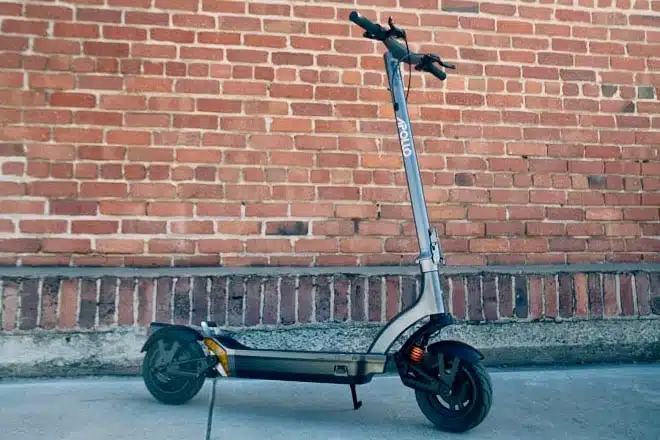Electric scooters have exploded in popularity over the last few years, offering a fun, eco-friendly way to zip around the city or tackle short commutes. But if you’re a heavier rider—say, someone who weighs over 250 pounds—you can’t just grab any model off the shelf. Standard scooters often fall short in terms of power, stability, and durability when carrying extra weight. That’s where high-weight capacity electric scooters come into play. These beefed-up rides are designed specifically for folks who need more robustness without sacrificing ride quality. In this buying guide, we’ll break down the top features to prioritize when shopping for an electric scooter that can handle your weight. Whether you’re navigating urban streets, hilly neighborhoods, or longer paths, getting the right one means safer, smoother adventures.
Why Weight Matters in Electric Scooters
Before diving into the features, let’s talk about why weight capacity is non-negotiable. Most entry-level scooters are rated for 220-250 pounds, but pushing beyond that can lead to sluggish performance, frequent breakdowns, or even safety risks like tipping over. High-weight capacity electric scooters typically support 300 pounds or more—some go up to 400 pounds or beyond. This isn’t just about the rider; it accounts for added cargo like backpacks or groceries too.
Look for scooters explicitly labeled with a high weight limit in the specs. Brands like Segway, Gotrax, and Apollo often shine here, but always verify real-user reviews from heavier riders to confirm the claims hold up. A good rule of thumb: aim for at least 50 pounds above your total loaded weight to ensure optimal performance.
1. Powerful Motor for Hill-Climbing and Speed
One of the first things to check is the motor. For heavy riders, a weak motor means struggling on inclines or barely hitting advertised speeds. Opt for high-weight capacity electric scooters with dual motors or at least a single 500-watt (or higher) hub motor. Dual 350W motors, for example, can deliver the torque needed to power through 15-20% grades without bogging down.
Why does this matter? Heavier loads increase resistance, so a stronger motor maintains speed—think 15-20 mph top speeds even uphill. Look for models with adjustable speed modes; this lets you dial back for flat terrain to save battery or crank it up for challenges. In real-world testing, scooters like the Segway Ninebot Max G30P (with a 350W motor) handle 265-pound riders effortlessly on moderate hills, proving that power pays off.
2. Robust Battery and Extended Range
Battery life is another make-or-break feature. Extra weight drains power faster, so skimping here could leave you walking home mid-ride. Prioritize high-weight capacity electric scooters with lithium-ion batteries rated at 36V or 48V and capacities of 15Ah or more. This setup often translates to 20-40 miles of range per charge, depending on your weight, terrain, and speed.
Realistically, a 300-pound rider might get 70-80% of the stated range, so factor that in. Fast-charging options (under 6 hours) are a bonus for daily use. Check for IP-rated water resistance too—IP54 or higher keeps the battery safe from splashes. The Hiboy Titan, with its 48V 18Ah battery, is a standout for heavy users, offering up to 30 miles even under load.
3. Durable Tires and Suspension for Comfort and Stability
Bumpy roads can turn a scooter ride into a jarring ordeal, especially with more weight compressing the frame. Solid or pneumatic tires (air-filled for better shock absorption) in 10-inch sizes or larger provide the stability heavy riders need. Avoid tiny 8-inch wheels; they wobble under pressure.
Suspension is key for smoothing out potholes and curbs. Dual front and rear shocks, like those on the EMOVE Cruiser, absorb impacts better than springless models, reducing fatigue on your back and joints. For high-weight capacity electric scooters, honeycomb tires (puncture-proof foam) strike a balance between durability and ride quality—no flats, but still cushy. Always test-ride if possible to feel the difference; a stable scooter prevents accidents and makes longer rides enjoyable.
4. Sturdy Build Quality and Frame Design
A flimsy frame won’t cut it for heavy riders. Look for aircraft-grade aluminum or reinforced steel construction that can withstand daily stress without bending. Foldable designs are great for storage, but ensure the folding mechanism is heavy-duty—cheap hinges can fail under weight.
Deck size matters too: a wider, non-slip deck (at least 7 inches) gives your feet more room and better control. High-weight capacity electric scooters often feature reinforced stems and handlebars to prevent vibrations from loosening bolts over time. Weight distribution is crucial; models with a low center of gravity (battery low on the frame) enhance balance. The Turboant X7 Max, at around 40 pounds itself, uses a solid aluminum alloy frame that supports up to 350 pounds without flexing.
5. Reliable Braking System for Safety
Braking isn’t glamorous, but it’s vital for heavier riders. The added momentum means you need stopping power that works every time. Dual brakes—disc (mechanical or hydraulic) combined with electronic (E-ABS)—are ideal. Disc brakes handle wet conditions better, while E-ABS provides smooth, regenerative stopping that recharges the battery slightly.
Avoid single-regen-only systems; they’re fine for light use but can feel inadequate under load. Test for a stopping distance under 15 feet from 15 mph. Safety extras like front and rear LED lights, turn signals, and reflectors make you visible, especially at dusk. In high-weight capacity electric scooters, features like these can prevent mishaps—user stories from riders on forums like Reddit’s r/ElectricScooters highlight how good brakes saved the day on declines.
6. Additional Safety and Convenience Features
Beyond the basics, smart features elevate your ride. App connectivity via Bluetooth lets you track rides, lock the scooter, or adjust settings—handy for customizing to your weight. Waterproofing (IPX5+) ensures reliability in rain, a must for commuters.
Portability is a trade-off; heavier-duty scooters weigh 40-60 pounds, so if you need to carry it upstairs, look for lightweight yet strong options. Some include seats for comfort on longer hauls, though that’s more for mobility aids. Budget-wise, expect to pay $500-$1,500 for quality high-weight capacity electric scooters. Cheaper ones under $300 often cut corners on safety.
How to Choose and Maintain Your Scooter
When shopping, read specs from reputable sites like the manufacturer’s page or Amazon reviews filtered by heavier users. Certifications like UL 2272 ensure electrical safety. Test ride at a local shop if available—feel the throttle response and brakes yourself.
Maintenance is straightforward: keep tires inflated, clean the deck, and charge properly to extend battery life. For heavy riders, inspect brakes and bolts monthly. With the right high-weight capacity electric scooter, you’ll enjoy the freedom of effortless mobility without the worries.
In conclusion, investing in an electric scooter tailored for heavy riders means focusing on power, durability, and safety. By prioritizing these features, you’ll find a model that not only supports your weight but enhances your daily rides. Whether for commuting or leisure, high-weight capacity electric scooters open up a world of convenient travel. Happy scooting!













